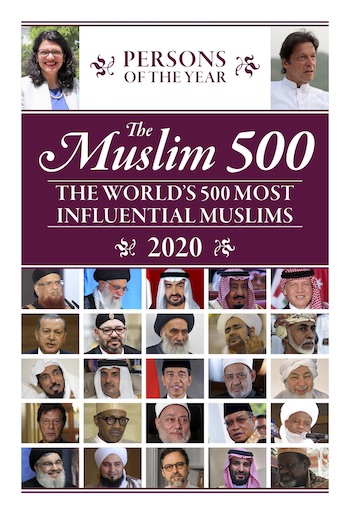Introduction
Welcome to the twelfth annual issue of The Muslim 500: The World’s 500 Most Influential Muslims. We are very pleased that we have made it this far and that the book has evolved as it has. We thank you for all your support and suggestions and look forward to continually receiving them.
There are approximately 1.9 billion Muslims in the world today, making up 26% of the world’s population, or just over one-quarter of mankind. As well as being citizens of their respective countries, they also have a sense of belonging to the ‘ummah’, the worldwide Muslim community.
This publication sets out to ascertain the influence some Muslims have on this community, or on behalf of the community. Influence is: any person who has the power (be it cultural, ideological, financial, political or otherwise) to make a change that will have a significant impact on the Muslim world or Muslims. Note that the impact can be either positive or negative, depending on one’s point of view of course. The selection of people for this publication in no way means that we endorse their views; rather we are simply trying to measure their influence. The influence can be of a religious scholar directly addressing Muslims and influencing their beliefs, ideas and behaviour, or it can be of a ruler shaping the socio-economic factors within which people live their lives, or of artists shaping popular culture. The first two examples also point to the fact that the lists, and especially the Top 50, are dominated by religious scholars and heads of state. Their dominant and lasting influence cannot be denied, especially the rulers, who in many cases also appoint religious scholars to their respective positions.
This doesn’t discount the significant amount of influence from other sectors of society. How to measure this influence is of course the most challenging aspect of the publication, and the one where opinions diverge the most. Influence can sometimes be gauged on a quantitative basis, the number of followers, the number of books written, the amount of sales etc., but more often it is not something measurable in quantitative terms and is more related to the qualitative and lasting effect of that influence. A combination of social metrics, public opinion (we have a month-long open call for nominations every year, and all of the suggestions are considered) and expert opinion are the basis of this attempt to measure influence. The achievements of a lifetime are given more weight than achievements within the current year. People who are trailblazers, or the lone voice in a remote area are also taken into account as we give weight to people breaking barriers and to local influence as well as global influence. This means that our list of names will change gradually, rather than dramatically, year-on-year. The publication selects Muslim individuals from a range of categories of influence, 13 in total:
• Scholarly
• Political
• Administration of Religious Affairs
• Preachers and Spiritual Guides
• Philanthropy/Charity and Development
• Social Issues
• Business
• Science and Technology
• Arts and Culture
• Qur’an Reciters
• Media
• Celebrities and Sports Stars
• Extremists
The individuals are listed in each category according to geographical region (Middle East and North Africa, Sub-Saharan Africa, Asia, Europe, Oceania, North America, South America), then in alphabetical order by country and finally by surname.
This publication combines aspects of a review of the past year, including a timeline and statistics, but it also hopes to serve as a prospective guide to the new year, much like a Who’s Who.
What’s in this issue?
We have our editor write about the Persons of the Year; these individuals achieved or represented something significant in the past year.
Our editor then offers his Selected Survey of the major events which have affected the Muslim world over the past twelve months.
We then have a special commissioned report on Covid-19. It investigates how different countries around the world have dealt with the disease and it composes a ranking of Policy Effectiveness based on an Estimate of Policy caused Deaths (EPD).
Then we have our regular House of Islam essay which gives an overview of Islam and its branches. An updated Top 50 and 450 lists (including Honourable Mentions) then follows.
Our Guest Contributions section has exclusive articles covering a wide range of issues. These are sure to stimulate thought and discussion around current pressing issues.
Our Book Reviews review some books that have been published recently. The ‘Major Events’ section provides a timeline of the major events that have taken place over the past year.
Appendices I and II provide us with lots of statistics. Appendix I shows total population and Muslim population by country, for all the countries in the world. Appendix II compiles a list of the highest Muslim Facebook, Twitter and Instagram users, as well as the highest in the world.
To give a richer visual experience we have also included several calligraphy pieces throughout the book, which we hope will serve as a beautiful reminder to pause and reflect as you go through the book.
We have also added write-ups within the main body of the text about major initiatives (see the Amman Message on page 75, A Common Word on page 145, the Marrakesh Declaration on page 152, The Muslim Council of Elders on page 160, Free Islamic Calligraphy on page 169, UN World Interfaith Harmony Week on page 180, Altafsir.com on page 194 and Eco Legal Persona on page 22)
Our website [www.themuslim500.com] is a popular destination. We welcome your feedback and will take nominations for the 2022 edition through it.


